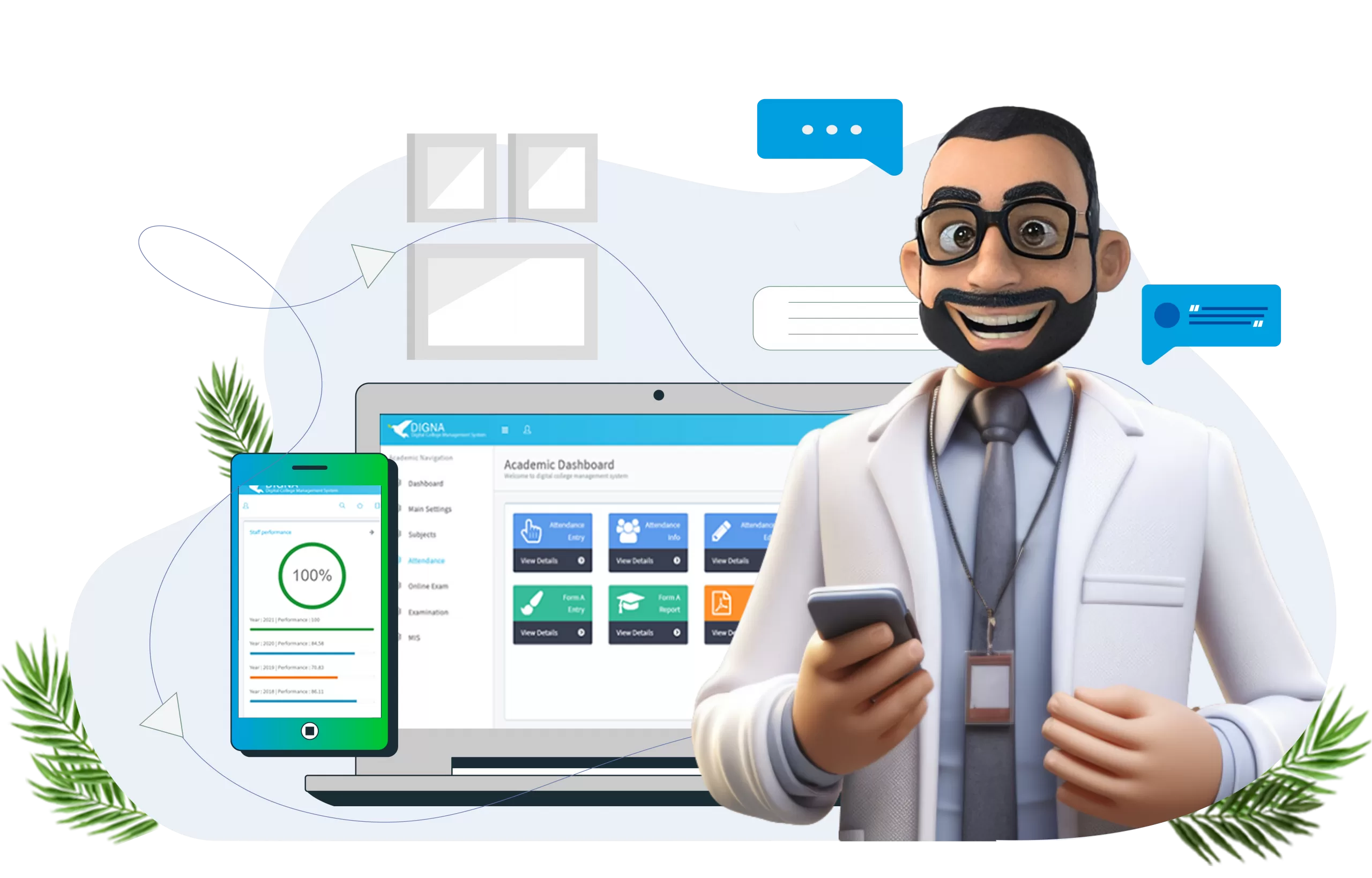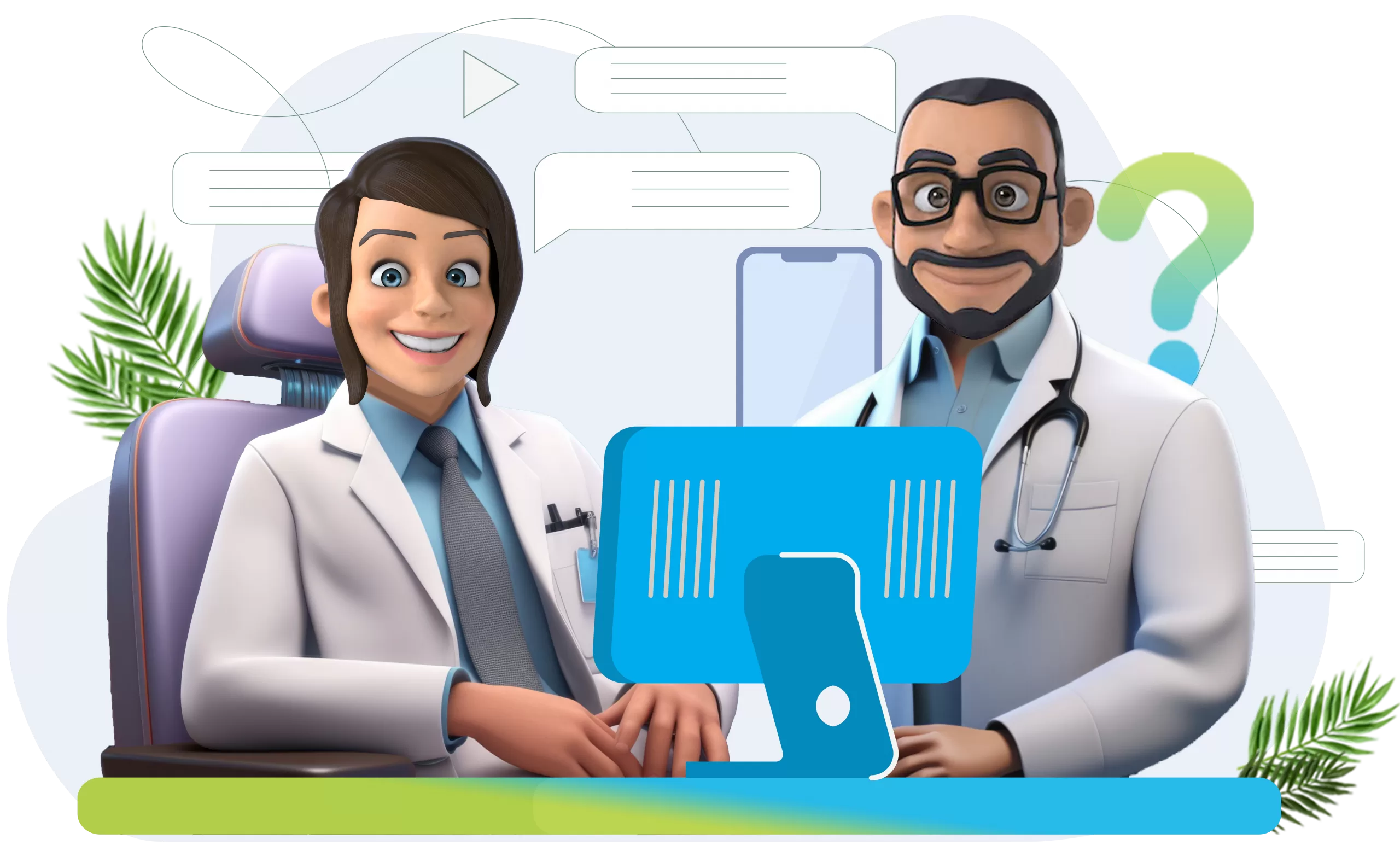Outcome Based Education Software
Outcome Based Education Software


Features of Outcome-Based Education Software
Features of Outcome Based Education Software (OBE)
Outcome-based education (OBE) software typically includes features such as Learning Outcome Management, Assessment and Evaluation, Gradebook and Data Visualization, Reporting and Analytics, Collaboration and Communication, Curriculum Mapping, LMS Integration, and Mobile Compatibility. These features enable educators to create and manage learning outcomes, align them with curriculum standards, track student progress, create and administer assessments, and generate reports and analytics on student performance. They also allow for collaboration and communication between educators, students, and other stakeholders and provide a seamless experience through college management system integration and mobile compatibility.
Softloom it Solutions’s Outcome Based Education System enables higher education institutions to meet NBA guidelines
Outcomes
Direct Attainment
Indirect Attainment
Direct Attainment & Indirect Methods
Outcome Based Education Software (OBE)
Understanding the Differences Between Direct and Indirect Methods
OBE can provide several benefits for teachers, college management, students, and the country.
Benefits of Outcome Based Education software(OBE)
Frequently Asked Questions
Outcome-based education software is a type of educational technology that measures and improves student learning outcomes. It typically includes tools for tracking student progress, measuring student performance, and providing personalized feedback and instruction. This software is designed to help teachers and administrators identify areas where students need additional support and provide them with the resources and guidance they need to achieve their learning goals.
In contrast, traditional education software is focused on providing students with access to learning content and resources, such as textbooks, lesson plans, and multimedia materials. While conventional education software can be used to support student learning, it may not be specifically designed to measure or improve student outcomes. Outcome-based education software is more focused on tracking and measuring student progress and providing personalized instruction to help students achieve their learning goals.
Outcome-based education software can improve student learning outcomes in several ways:
- Tracking student progress: Outcome-based education software can track student progress and measure learning outcomes over time. This allows teachers to identify areas where students need additional support and to provide targeted instruction to help them improve.
- Personalizing instruction: The software can provide personalized education to students based on their individual needs and learning styles. This can help students to learn more effectively and achieve their learning goals more quickly.
- Providing feedback: Outcome-based education software can give the students immediate feedback on their performance, which can help them to understand their strengths and weaknesses and to identify areas where they need to improve.
- Supporting blended and remote learning: Outcome-based education software can support blended and remote learning by providing students with access to educational content and resources from any location. This can help to increase student engagement and motivation.
- Supporting formative and summative assessment: Outcome-based education software can support formative and summative evaluation by providing teachers with tools to assess student understanding and progress. This can help teachers to identify areas where students need additional support and to deliver targeted instruction to help them improve.
- Data-driven decision-making: Outcome-based education software can provide teachers and administrators with detailed data on student performance, which can inform instructional decisions and school-wide policies.
- Engage students: Outcome-based education software can engage students by providing interactive learning experiences, games, and simulations which can be more exciting and engaging than traditional teaching methods.
- Self-paced learning: Outcome-based education software can allow students to learn at their own pace, which can be especially beneficial for students with different learning needs.
Outcome-based education (OBE) software can be used to support blended and remote learning in several ways:
- Access to educational content: OBE can provide students with access to educational content and resources. Such as textbooks, lesson plans, and multimedia materials, from any location. This allows students to continue learning even when they are away from the classroom.
- Tracking student progress: Outcome-based education software can be used to track student progress and measure learning outcomes over time. It can help teachers identify areas where students need additional support and provide targeted instruction to help them improve.
- Personalized instruction: Outcome-based education software can be used to provide personalized instruction to students based on their individual needs and learning styles. This can help students to learn more effectively and achieve their learning goals more quickly.
- Online assessments and quizzes: Outcome-based education software can include online reviews and quizzes that can be used to track student progress and measure learning outcomes.
- Automated feedback: Outcome-based education software can provide students with immediate feedback on their performance. Which can help them understand their strengths and weaknesses and identify areas where they need to improve.
- Synchronous or asynchronous learning: Outcome-based education software can allow students to learn at their own convenience and on their own schedule.
- Mobile accessibility: Outcome-based education software can be accessed via mobile devices. Which can help to increase student engagement and motivation. Make it more convenient for students to access educational resources and communicate with their teachers.
Outcome-based education software can integrate with existing curricula and lesson plans in several ways:
- Alignment with standards: Outcome-based education software can be aligned with state and national standards, which allows teachers to easily integrate the software into their existing curriculum and lesson plans.
- Customizable content: Outcome-based education software can include customizable content, such as lesson plans and assessments, that can be adapted to meet the unique needs of a college or University.
- Integration with learning management systems: Outcome-based education software can be integrated with learning management systems (LMS), such as Blackboard, Canvas, and Moodle, which allows teachers to easily access the software from within their existing curriculum and lesson plans.
- Collaboration with teachers: Outcome-based education software providers often have a team of education experts who can work with teachers to align the software with existing curriculum and lesson plans.
- Importing and exporting data: Outcome-based education software can be integrated with existing curriculum and lesson plans by allowing teachers to import and export data from other systems, such as student information systems (SIS) and gradebooks.
- Data analytics: Outcome-based education software can provide teachers with detailed data on student performance, which can be used to inform instructional decisions and align the curriculum with students‘ needs.
- Integration with other tools: Outcome-based education software can integrate with other tools such as educational games, simulations, and interactive activities to make learning more engaging and interactive.
- Flexibility in design: Outcome-based education software is often designed with flexibility, allowing teachers to use it in different ways to support their curriculum and lesson plans best.
Outcome-based education software can be used to personalize learning for individual students in several ways:
- Adaptive learning: Outcome-based education software can use algorithms to adapt the learning experience to the individual needs of each student. This can include adjusting the difficulty level of assignments and assessments, providing targeted instruction, and providing personalized feedback.
- Learning profiles: OBE can create learning profiles for each student, including information about their learning style, strengths, and areas for improvement. This information can be used to personalize the learning experience for each student.
- Self-paced learning: Outcome-based education software can provide students with the opportunity to learn at their own pace. Which can help ensure that each student is challenged at an appropriate level.
- Personalized goal setting: OBE can be used to help students set personalized learning goals and track their progress toward achieving those goals.
- Customized learning paths: OBE can be used to create customized learning paths for each student. Which can include a combination of instructional materials, activities, and assessments. That are tailored to their individual needs.
- Differentiation: Outcome-based education software can be used to differentiate instruction by providing different assignments, activities, and assessments to students based on their current level of understanding and ability.
- Student data tracking: OBE can track student data such as performance in assessments, time spent on tasks, and engagement. Which can help teachers to personalize instruction for individual students.
- Feedback and support: Outcome-based education software can provide immediate feedback to students and support for their learning. Providing teachers with detailed data on student performance can help them identify areas where students need additional support.





